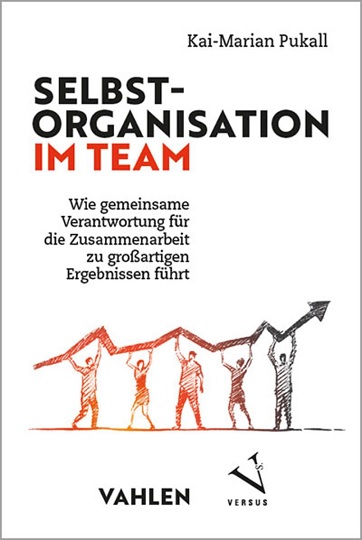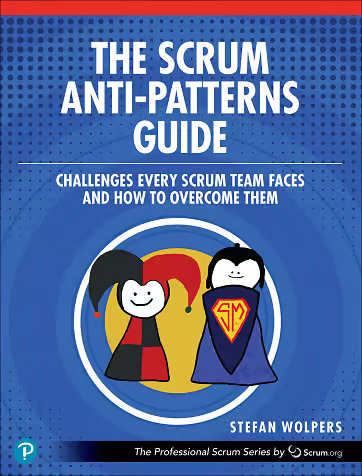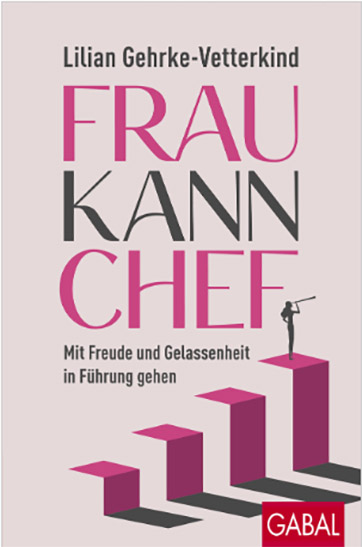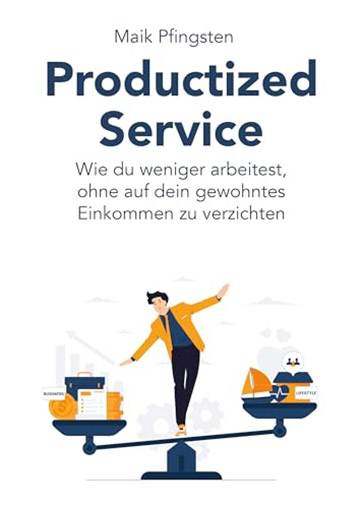Oh, books worth reading
“Learning is like rowing against the current. If you stop, you drift back.” – Lao-Tse
“Literature is the instrumentation of truisms.” – Thornton Wilder
“Literature is the art of discovering extraordinary things about ordinary people and saying extraordinary things about them in ordinary words.” – Boris Pasternak
Reading is considered the second most beautiful thing in the world. Even though I am still not sure what the most beautiful thing is, I would like to recommend some books worth reading again. This time by and with Kai-Marian Pukall, Stephanie Borgert, Dr Martina Weifenbach, Stefan Wolpers, Lilian Gehrke-Vetterkind and Maik Pfingsten.
Self-organisation in a team
(Selbstorganisation im Team)
How shared responsibility for collaboration leads to great results
(Wie gemeinsame Verantwortung für die Zusammenarbeit zu großartigen Ergebnissen führt)
Kai-Marian Pukall
Kai, what is your book about?
Kai: Teams are successful when their members actively take responsibility and help to shape structures. “Self-organisation in teams” is about how they can do this throughout the entire life cycle of a team. It is intended as basic literature, a handbook and a reference work that can not only be read in one go, but can also be used in sections to answer specific questions. A small selection of the topics covered:
- What makes successful teams?
- How does team development work?
- What is particularly important when setting up a team?
- What does “self-organisation” mean in relation to teams?
- Can a team also use self-organisation if there is a team leader or manager? (Spoiler: Yes, of course!)
- How do we organise everyday team life in a productive and solution-oriented way?
- Who actually “leads” a self-organised team and how does it work?
- What do we do when problems arise during collaboration?
Why did you write the book?
Kai: Self-organisation is often seen as a tricky subject and equated with chaos or a lack of structure. From my many years of experience in self-organised teams, I know that the exact opposite is the case. Successful teams often structure their collaboration in a remarkably clear and disciplined way. However, a lot can go wrong along the way – it is easy to disrupt team development with (avoidable) mistakes or to jeopardise shared responsibility. With this book, I want to help teams, team leaders and coaches to skilfully use self-organisation as a tool.
Many of the ideas in the book are not new, but have been available in the specialist literature for years. However, as the available knowledge is often scattered across many different books, “Self-Organisation in Teams” provides an initial overview of common methods and tools and is therefore a good starting point for more in-depth research.
Who should read the book?
Kai: The book is particularly useful for team and project managers, Scrum Masters, Product Owners, organisational consultants and Agile Coaches. With a deliberately relaxed and accessible style, I also want to appeal to “normal” team members who want to get involved in the structures and strategy of their team beyond their technical work. If you only want to read one book about teams, “Self-Organisation in Teams” would be a good choice.
Experienced organisational consultants and team coaches who have already worked through a bulging shelf of literature will probably be familiar with many of the methods and tools. For this group, I have interspersed advanced ideas that allow you to recognise the basic principles behind the methods and use them in a more targeted and effective way.
Here you can find more information about the book “Selbstorganisation im Team”.
Thinking together, changing effectively
(Gemeinsam denken, wirksam verändern)
Organisational discourse as the key to change
(Organisationaler Diskurs als Schlüssel zum Change)
Stephanie Borgert
Stephanie: Thinking. Discourse. Change.
That’s the short answer. In the book, I present organisational discourse as a tool for complexity-appropriate, people-friendly change in organisations. It answers the question of how to design a process that (in the best case) invites all organisational members to reflect on and update their collective evaluation patterns. This always makes sense when it comes to a fundamental change in behavioural routines and communication patterns.
Organisational discourse opens up a space in which people can engage in this debate in small groups in a self-organised manner. Guided, but without a coach or facilitator. This is why didactics is so important. The groups are guided through reflection, input and interaction to a deep, meaningful discussion. The process is known to everyone, transparent and the task is crystal clear – to enable change in the sense of the organisation as a research group.
Shared thinking takes place in this “domination-free space”. This is important to me because in my day-to-day life I almost only experience “thinking alone” and insisting on my own point of view. Thinking together, i.e. reflecting, (allowing oneself to be) irritated, negotiating and agreeing on points of view, is an iterative process of practical discourse.
In the book, I describe the conditions under which organisational discourse succeeds. Eight principles are described at the beginning. They convey basic assumptions from systems theory about reality, organisation, learning, complex systems, change, images of people, impositions and communication. Without this understanding in the background, success is less likely.
The book thus moves from the abstract to the concrete and describes organisational discourse as a tool for developing organisations. It is explicitly not a workshop format or “a different way of talking to each other”. Organisational discourse is an attitude and a process.
Why did you write the book?
Stephanie: We urgently need a different story to tell ourselves about change. The “usual” narratives of change curves, people’s resistance, taking everyone along, just communicating well (whatever that might be) come from an old reductionist way of thinking about change and are inappropriate in complexity and also not particularly people-friendly.
At the same time, the explanatory model that I still encounter most often is highly psychologised. That’s why people should be taken along or turned from being affected into participants. We then work our way through individuals instead of understanding organisations as complex systems. I don’t think that’s the right approach. The organisational discourse does not put psychology out of its place, but rather gives rise to further, helpful and appropriate explanations. This also changes the interventions in change processes. I would like to draw attention to this.
And who should read the book?
Stephanie: Change initiators and managers, executives of all kinds, HR managers, organisational developers, people from the consulting profession, project managers and anyone who is interested in a systems theory-based view of change.
Here you can find more information about the book “Gemeinsam denken, wirksam verändern”.
Mindfulness as a formula for success
(Erfolgsformel Achtsamkeit)
Lead consciously, win sustainably
(Bewusst führen, nachhaltig gewinnen)
Dr. Martina Weifenfach
Martina: The book “Erfolgsformel Achtsamkeit. Consciously lead, sustainably win” is about effective mindfulness practices from 18 experts from the business world. Based on years of experience with mindfulness programmes in companies, the experts share their experiences, success stories and practical instructions for anyone who wants to bring mindfulness and awareness into the company as a way to bring about cultural change.
In addition to tools and strategies, they will also discuss scientific findings relating to mindfulness and neuroscience.
Other exciting content looks at the interplay between mindfulness and creativity with the aim of tackling innovation and digitalisation. Or how mindfulness can support managers in consciously shaping new and hybrid work while keeping an eye on issues such as sustainability and uncertainty.
Why did you write the book?
Martina: Even though the figures on mental health and sickness-related absenteeism in companies are constantly rising, many companies still don’t have the confidence to approach mindfulness and mindfulness programmes. Many continue to dismiss mindfulness as esoteric, while managers in decision-making and budget responsibility positions prioritise other topics. And yet digitalisation, technological change and polycrises are directly linked to the workforce and their ability to deal with them. Conscious action, actively living resilience and mindful co-creation can make organisations extremely strong in tackling the challenges together. This book has been written with the aim of supporting managers, directors and employees in integrating mindfulness into the New Work context using practical methods and tools and thereby developing their impact together.
And who should read the book?
Martina: The book is for anyone who is interested in consciously shaping change. It is for managing directors who want to shape the future today and for managers who want to continue to grow healthily and strongly with their employees. But it is also for mindfulness enthusiasts who are looking for practical experience to bring mindfulness programmes into the company in a strategic and targeted way.
Here you can find more information about the book “Erfolgsformel Achtsamkeit”.
The Scrum Anti-Pattern Guide
Challenges every Scrum Team faces and how to overcome them
Stefan Wolpers
Stefan: The “Scrum Anti-Patterns Guide” uses the principle of inversion to provide a new perspective on the successful application of Scrum by focussing on what can go wrong – the anti-patterns.
This approach encourages an understanding of problems from a different angle, leading to new insights and solutions. Identifying the causes of errors allows them to be reversed, enabling more effective error prevention and the introduction of appropriate countermeasures.
This inversion principle supports learning from mistakes, the adaptation of practices, the prioritisation of measures and promotes a proactive mindset. Overall, it strengthens the learning process and makes it easier for teams to continuously improve by adopting a different perspective.
Why did you write the book?
Stefan: The book is intended as a practical, tactical guide for the many practitioners in the agile environment. I want to show how to use Scrum effectively to increase innovation and value creation.
In this context, it is important to understand that stakeholders expect regular, valuable delivery from a team above all else. Whether we use Scrum or something else for this is only of limited interest as long as we achieve our value creation ethically or legally and it makes financial sense. The focus is not on the practice of Scrum, but on solving customer problems and the team’s contribution to the sustainability of the organisation.
Scrum can be useful here, especially if you know the various pitfalls and how to get out of them. The book can contribute to this.
And who should read the book?
Stefan: Anyone who is interested in agile product development is a potential reader. Although the book primarily addresses Scrum, many of the challenges described are independent of a specific framework. They have systemic causes, are rooted in personal agendas or generally result from dealing with problems in a complex world.
Here you can find more information about the book “The Scrum Anti-Patterns Guide”.
Woman can boss
(Frau kann Chef)
Taking the lead with joy and composure
(Mit Freude und Gelassenheit in Führung gehen)
Lilian Gehrke-Vetterkind
Lilian, what is your book about?
Lilian: “Frau kann Chef” has become a really encouraging leadership manual. Not only do readers learn to better understand their own personality, but I also show them the way to successful female leadership step by step. The practical guide provides clear advice on how to deal with team members, provides support in conflict discussions and political games, opens readers’ eyes to their own leadership style and outlines how to deal with mistakes. At the same time, it discusses the typical issues that women are regularly confronted with today in a solution-orientated way: the compatibility of job, care and household work, the desire for part-time leadership, job-sharing challenges and the servant leadership approach.
The book provides a solid guide, tips and many practical examples for learning, living and enjoying leadership according to your own ideas. And to be a leader who shines with feminine qualities and shapes a team or an entire organisation with her – undisguised – manner.
Why did you write the book?
Lilian: In our country, the generalisation is as follows: 50% men, 50% women. And our constitution states that women and men have equal rights. But at management level, the maths still don’t add up. There is no sign of parity.
The reality in management looks like this on average: 70 % men, 30 % women. Yet women are just as intelligent and have the necessary skills and leadership competences.
Companies are enlightened enough. They know where the problems lie. At least not because women don’t want to lead at all. It’s that they are still not trusted to lead to the same extent – and they are reluctant to share power. And that annoys me – and many other people too.
I am addressing women directly with this book. So that they can seize their opportunities and shape their own careers. Because in the meantime, I believe that the motto is once again: it’s up to the woman.
And who should read the book?
Lilian: I motivate all women who doubt, hesitate, procrastinate – but actually want to. With the book, I give them an immediately applicable tool to realise their desire for design and equality.
Especially young women and women who want to take off again after raising children will find pragmatic tips in “Frau kann Chef” to take the lead in a self-confident, fearless and relaxed manner.
Here you can find more information about the book “Frau kann Chef”.
Productized Service
How to work less without sacrificing your usual income
(Wie du weniger arbeitest, ohne auf dein gewohntes Einkommen zu verzichten)
Maik Pfingsten
Maik, what is your book about?
Maik: In 2005, I decided to quit my well-paid corporate job and set up my own business. As a troubleshooter in project management, my speciality was rescuing international development projects in automotive development that had got into difficulties. I was living a life like most self-employed people do: 12 hour days, 6 days a week, a crazy travelling circus, stress with employees, far too little time for my little family AND I was the most important employee in my business – instead of the business working for me. I realised what I really wanted: time freedom!
In 2015, I standardised my services, put everything on autopilot and built my first productized service. Two years later, my tax advisor said: “Mr Pfingsten, whatever you do with the internet – you have to pay €40,000 in tax!”
My book is about how I managed to work less as an entrepreneur without giving up my usual income.
Why did you write the book?
Maik: The idea for the book came from my community. I then started my second podcast in 2014, in which I shared all my experiences and my journey. This resulted in a community that asked me in 2018 if I could write down what I talk about in the podcast.
So I described how I transformed my freelance service into a productized service in 2015 and figuratively put a racehorse in the stable. The result was that I sold my freelance engineering firm in 2021.
And who should read the book?
Maik: The book is ideal for freelance entrepreneurs. Who want to break out of their golden time-for-money hamster wheel. To have more time for the important things in life.
Here you can find more information about the book “Productized Service”.
What do you find worth reading?
In the world of literature, there are countless works that appeal to different groups of readers. But what exactly makes a book worth reading? Is it the captivating plot that transports us to another world? Or is it the profound characters with whom we can identify? Perhaps it is also the author’s linguistic skills that impress us and encourage us to read on.
The answer to this question is subjective and varies from person to person. Personally, I am always fascinated by what motivates people to write books. The individual reasons in particular give the whole thing a unique flavour. For me, that’s worth reading.
Notes:
If you like the article or want to discuss it, please share it in your network.
You can find more posts with book recommendations here:

Michael Schenkel
Head of Marketing, t2informatik GmbH
Michael Schenkel has a heart for marketing - so it is fitting that he is responsible for marketing at t2informatik. He likes to blog, likes a change of perspective and tries to offer useful information - e.g. here in the blog - at a time when there is a lot of talk about people's decreasing attention span. If you feel like it, arrange to meet him for a coffee and a piece of cake; he will certainly look forward to it!








